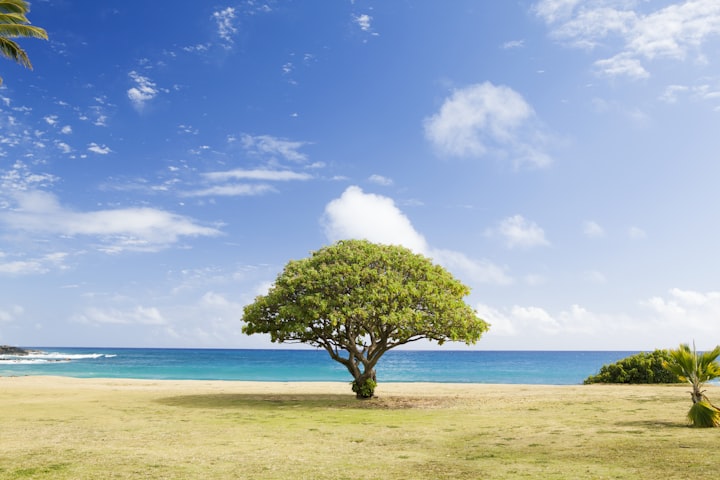
Redwood trees
Redwood trees (Sequoia sempervirens) are some of the tallest and oldest trees in the world. They are native to the west coast of the United States, specifically in the states of California and Oregon. Redwood trees can grow up to 379 feet tall and can live for thousands of years, with some individuals over 2,000 years old.
Redwood trees have a distinctive reddish-brown bark that is thick and fibrous. They have long, thin needles and produce small, cone-like seeds. Redwood trees are evergreens, meaning they keep their leaves all year round.
Redwood trees are known for their strength and durability, and their wood is often used for construction and other practical purposes. They are also an important habitat for many species of wildlife, including birds, mammals, and insects.
Redwood trees are an iconic symbol of the west coast of the United States and are protected by several state and national parks, including Redwood National and State Parks in California. They are an important part of the region's natural and cultural heritage and are a popular tourist attraction.
Oak trees
Oak trees (Quercus spp.) are a type of tree that is native to the northern hemisphere and is known for its strong wood and long-lasting leaves. There are hundreds of species of oak trees, which vary in size, shape, and appearance.
Oak trees have a strong, upright trunk and a rounded canopy of branches. They have leaves that are simple and lobed, and they produce acorns, which are a type of fruit. Oak tree leaves are often a vibrant green color and can remain on the tree for several years before falling off.
Oak trees are known for their strength and durability and are often used for construction and other practical purposes. They are also an important habitat for many species of wildlife, including birds, mammals, and insects.
Oak trees are a symbol of strength and endurance and are often used as a national symbol, such as the oak tree on the United Kingdom's royal coat of arms. They are also an important cultural and historical symbol and are often found in parks, gardens, and other landscaped areas.
Baobab trees
Baobab trees, also known as "the tree of life," are native to the dry, desert regions of Africa. They are known for their massive trunks, which can reach up to 26 feet in diameter, and their ability to store up to 32,000 gallons of water in their trunk, which helps them survive long periods of drought. The baobab tree has a long history of use by humans, who have used its fruit, leaves, and bark for food, medicine, and other purposes. The baobab tree is also an important food source for a variety of animals, including baboons, elephants, and giraffes. In recent years, the baobab tree has gained popularity as a source of natural products, including baobab oil and baobab powder, which are used in a variety of health and beauty products. The baobab tree is also considered to be an important cultural and spiritual symbol in many parts of Africa. However, the baobab tree is facing a number of threats, including habitat loss and climate change, and efforts are being made to protect and conserve these important trees.
Sequoia trees
Sequoia trees are closely related to redwoods and are native to the West Coast of North America. They are known for their massive size and can grow up to 311 feet tall. The giant sequoia is the most massive tree in the world, and some specimens have been found to be over 3,200 years old. Sequoia trees have a distinctive reddish-brown bark that is thick and fibrous, which helps protect the tree from fires. The trees are also resistant to insects and diseases, which helps them live for a long time. In addition to their size and longevity, sequoia trees are also known for their beauty and are popular tourist attractions. However, like many other tree species, sequoia trees are facing a number of threats, including habitat loss and climate change, and efforts are being made to protect and conserve these important trees.
Cherry blossom trees
Cherry blossom trees, also known as sakura trees, are known for their beautiful pink and white flowers, which bloom in the springtime. They are native to East Asia, but they are also cultivated in many other parts of the world. Cherry blossom trees are a symbol of spring and are an important part of Japanese culture and folklore. In Japan, cherry blossom season, or hanami, is a time of year when people gather under the cherry blossom trees to picnic, drink, and appreciate the beauty of the flowers. Cherry blossom trees are also popular in other parts of the world and are often planted in parks and gardens for their beauty. However, cherry blossom trees have a relatively short blooming period and are known for their delicate nature, which makes them susceptible to damage from storms and high winds.
Palm trees
Palm trees are native to tropical and subtropical regions and are known for their tall, slender trunks and large, feathery fronds. There are over 2,600 species of palm trees, which are used for a variety of purposes, including as sources of food, medicine, and building materials. Palm trees are an important part of many cultures around the world and are often associated with tropical vacations and warm weather. Many species of palm trees are popular as ornamental plants and are used to add a tropical touch to gardens and landscaping. Palm trees are also used in the production of a variety of products, including palm oil, which is used in food and cosmetics, and palm wood, which is used in construction and furniture-making. However, some species of palm trees are facing threats, including habitat loss and overharvesting, and efforts are being made to protect and conserve these important trees.
Maple trees
Maple trees are known for their beautiful autumn foliage and their maple syrup, which is made from the tree's sap. There are over 128 species of maple trees, which are found in a variety of climates around the world. Maple trees are popular as ornamental plants and are often used in landscaping due to their attractive foliage and shade. They are also an important source of wood, which is used in construction and furniture-making. Maple trees are known for their strong wood and are often used in the production of sports equipment, such as baseball bats and hockey sticks. In addition to their beauty and practical uses, maple trees are also an important part of many cultural and artistic traditions around the world. For example, the maple leaf is a symbol of Canada and appears on the country's flag.
Willow trees
Willow trees are known for their distinctive drooping branches and are often found near bodies of water. There are over 400 species of willow trees, which are found in a variety of climates around the world. Willow trees are popular as ornamental plants and are often used in landscaping due to their attractive appearance and ability to provide shade. They are also an important source of wood, which is used in a variety of applications, including basket-making and the production of cricket bats. Willow trees are also known for their medicinal properties and have been used in traditional medicine for centuries. The bark and leaves of willow trees contain compounds that are believed to have anti-inflammatory and pain-relieving effects, and willow bark is the source of the active ingredient in aspirin. However, like many other tree species, willow trees are facing a number of threats, including habitat loss and climate change, and efforts are being made to protect and conserve these important trees.
Pine trees
Pine trees are known for their tall, slender trunks and long, needle-like leaves. There are over 100 species of pine trees, which are found in a variety of climates around the world. Pine trees are popular as ornamental plants and are often used in landscaping due to their attractive appearance and ability to provide shade. They are also an important source of wood, which is used in construction and furniture-making. Pine trees are often used as Christmas trees and are a popular choice for holiday decorations. In addition to their practical uses, pine trees are also an important part of many cultural and artistic traditions around the world. For example, pine trees are a symbol of longevity and are often associated with the winter season. However, like many other tree species, pine trees are facing a number of threats, including habitat loss and climate change, and efforts are being made to protect and conserve these important trees.
Elm trees
Elm trees are known for their distinctive, vase-shaped canopy and their ability to withstand extreme weather conditions. There are over 30 species of elm trees, which are found in a variety of climates around the world. Elm trees are popular as ornamental plants and are often used in landscaping due to their attractive appearance and ability to provide shade. They are also an important source of wood, which is used in a variety of applications, including the production of furniture and paper. Elm trees are known for their ability to tolerate a range of soil conditions and are often used as street trees due to their tolerance of urban environments. However, elm trees are susceptible to Dutch elm disease, which is a fungal infection that can kill the tree. Efforts are being made to protect and conserve elm trees, including the development of disease-resistant varieties.






Comments
There are no comments for this story
Be the first to respond and start the conversation.